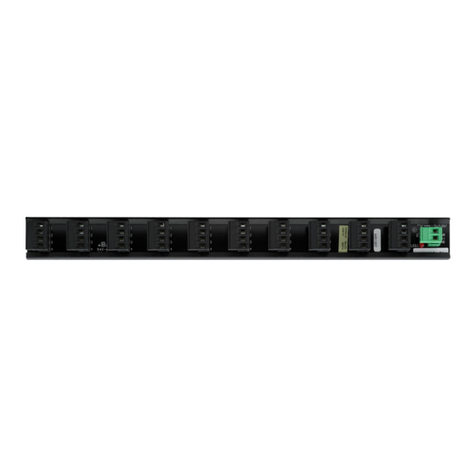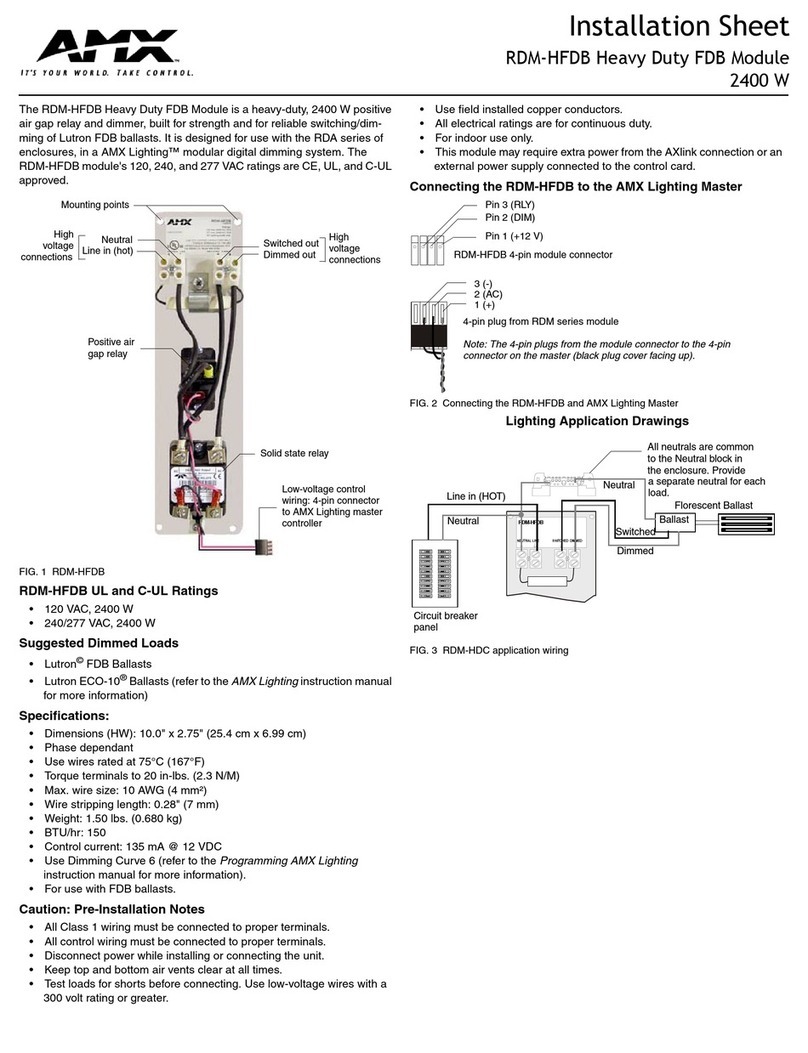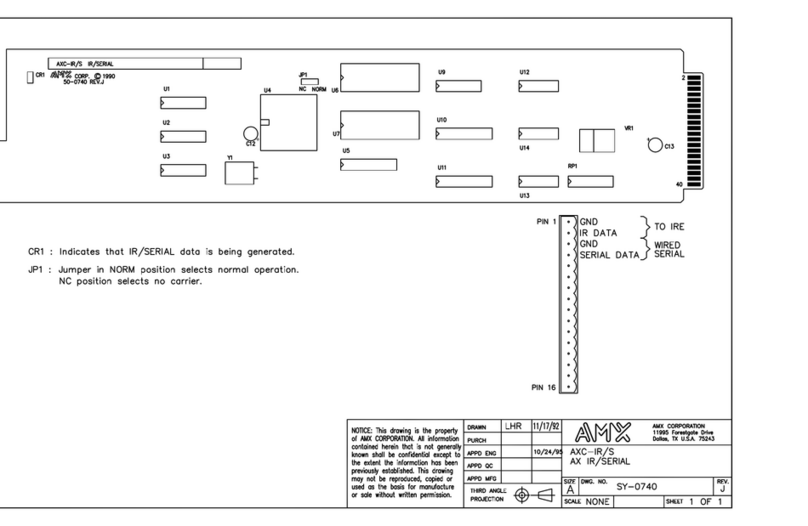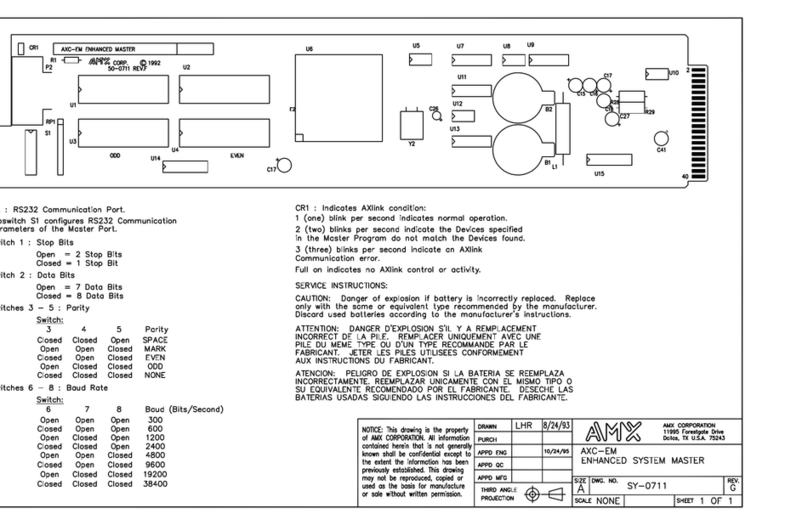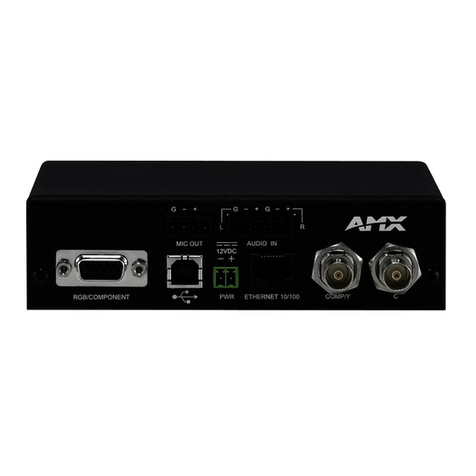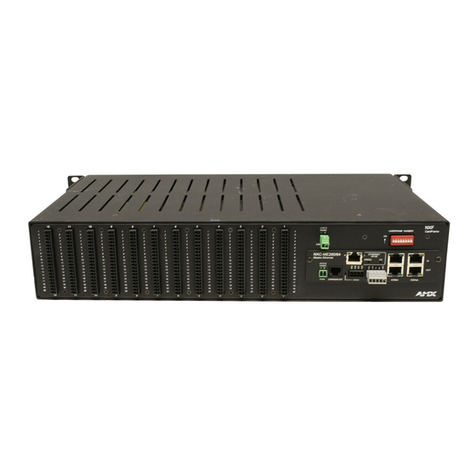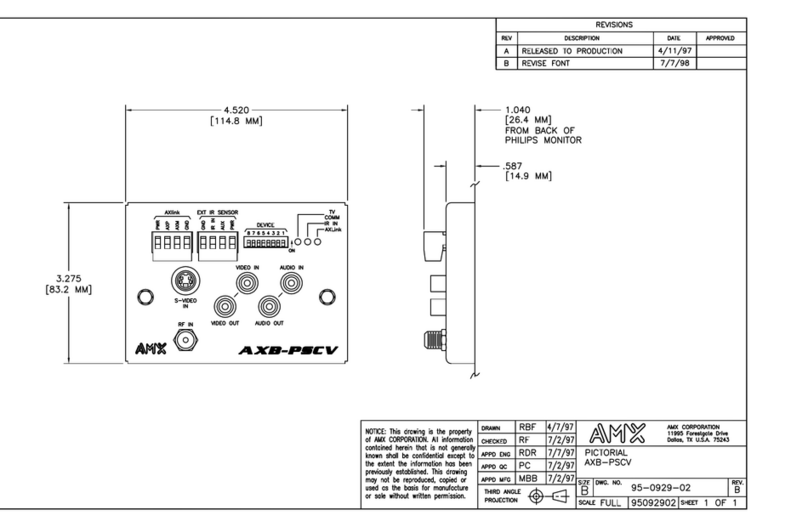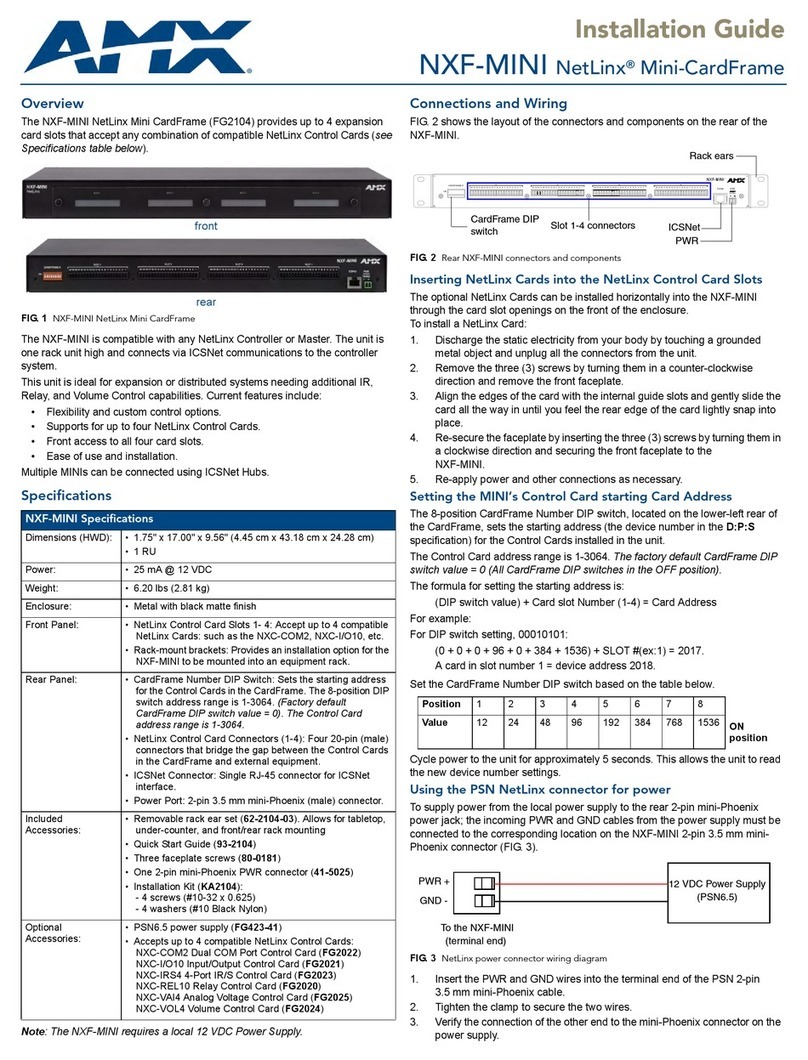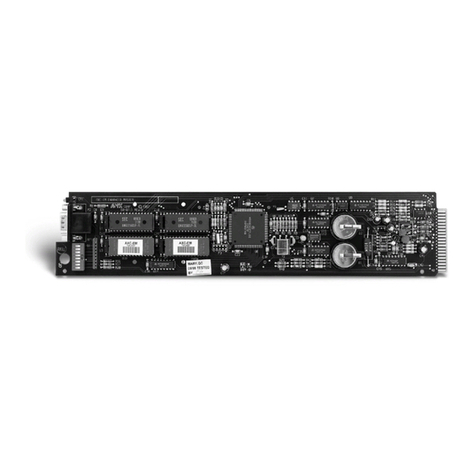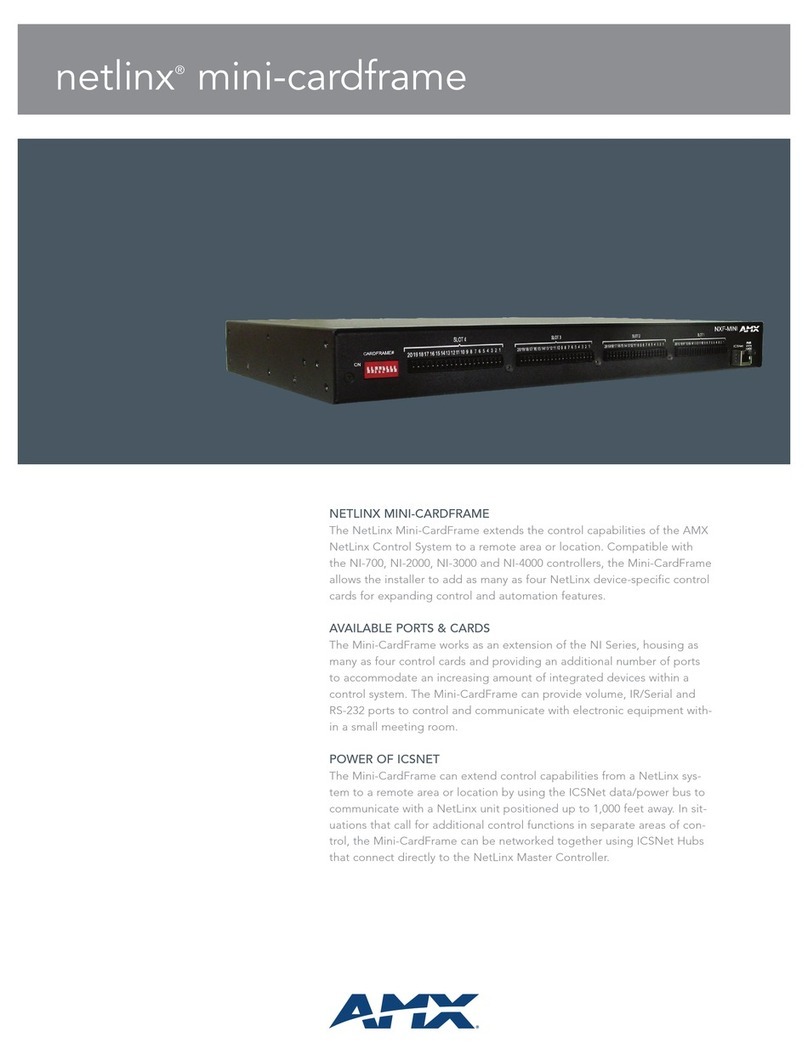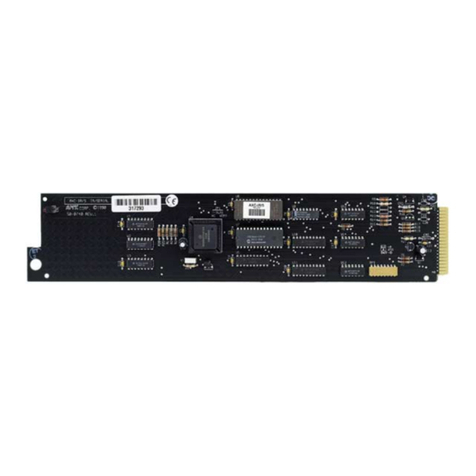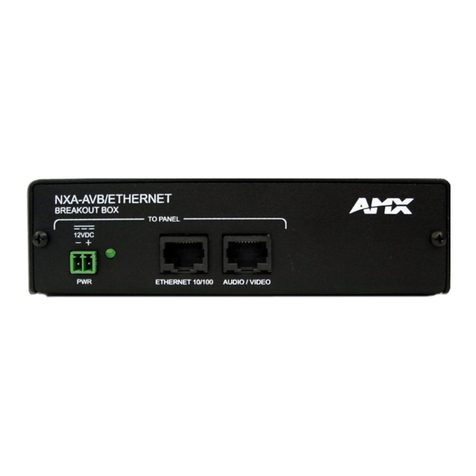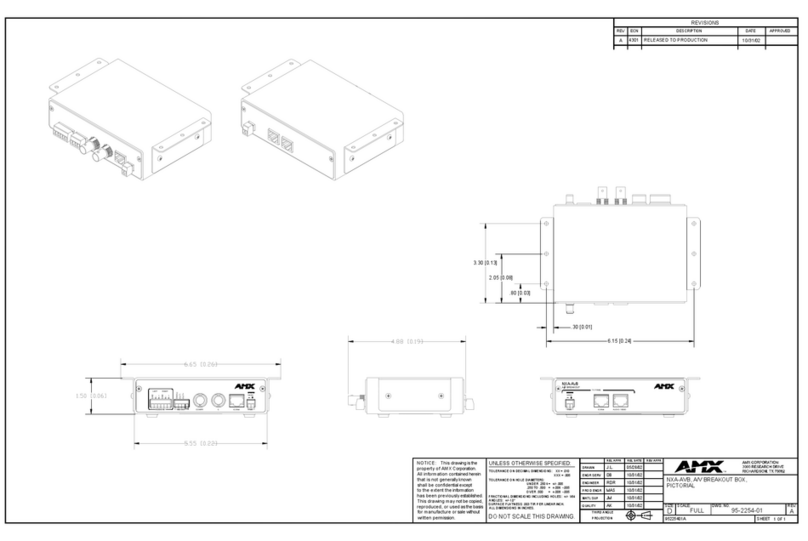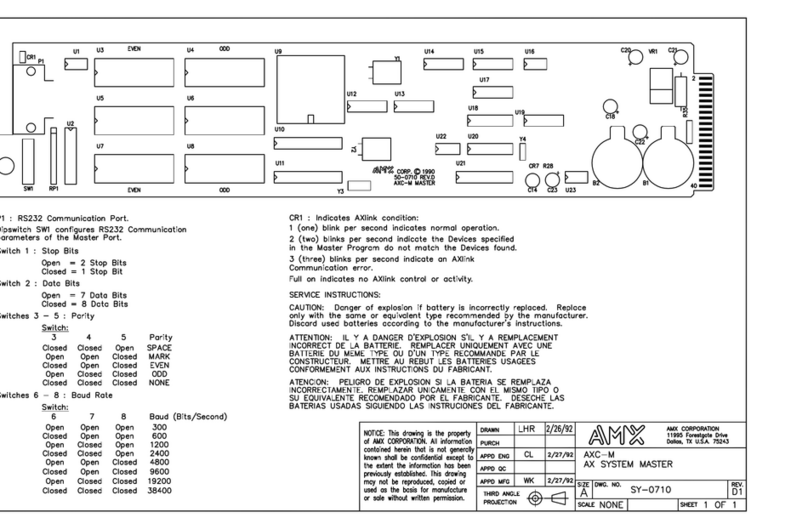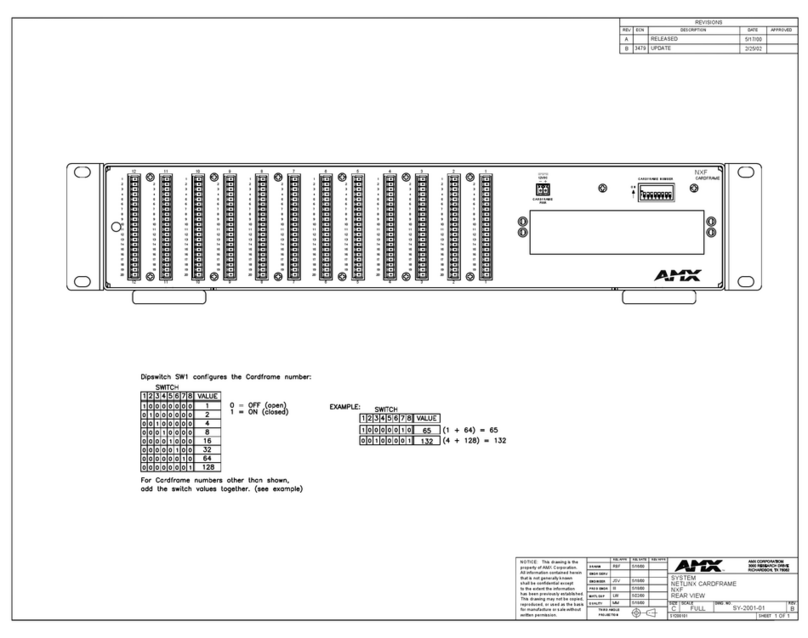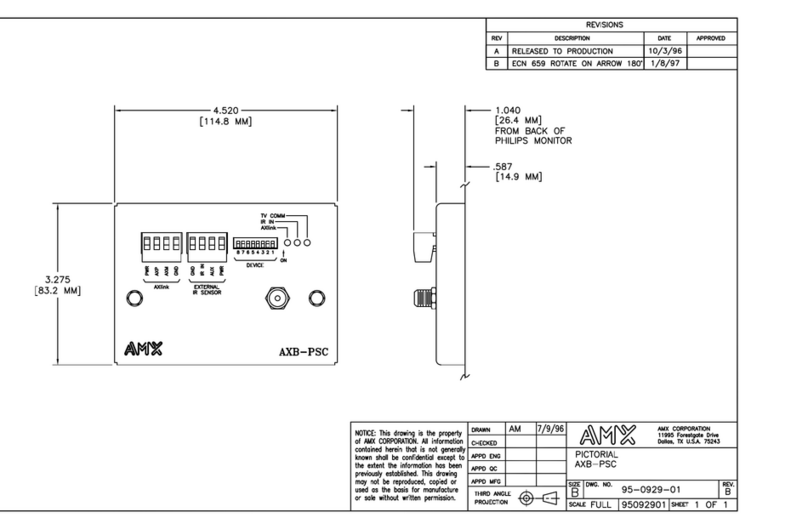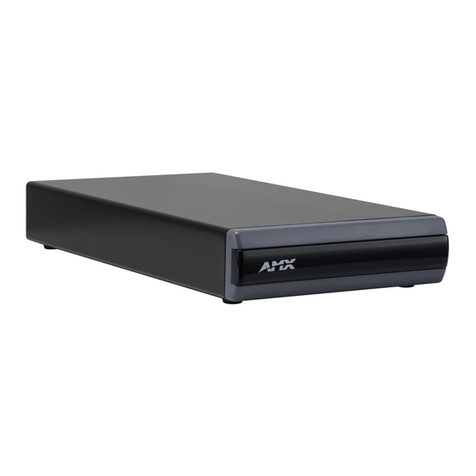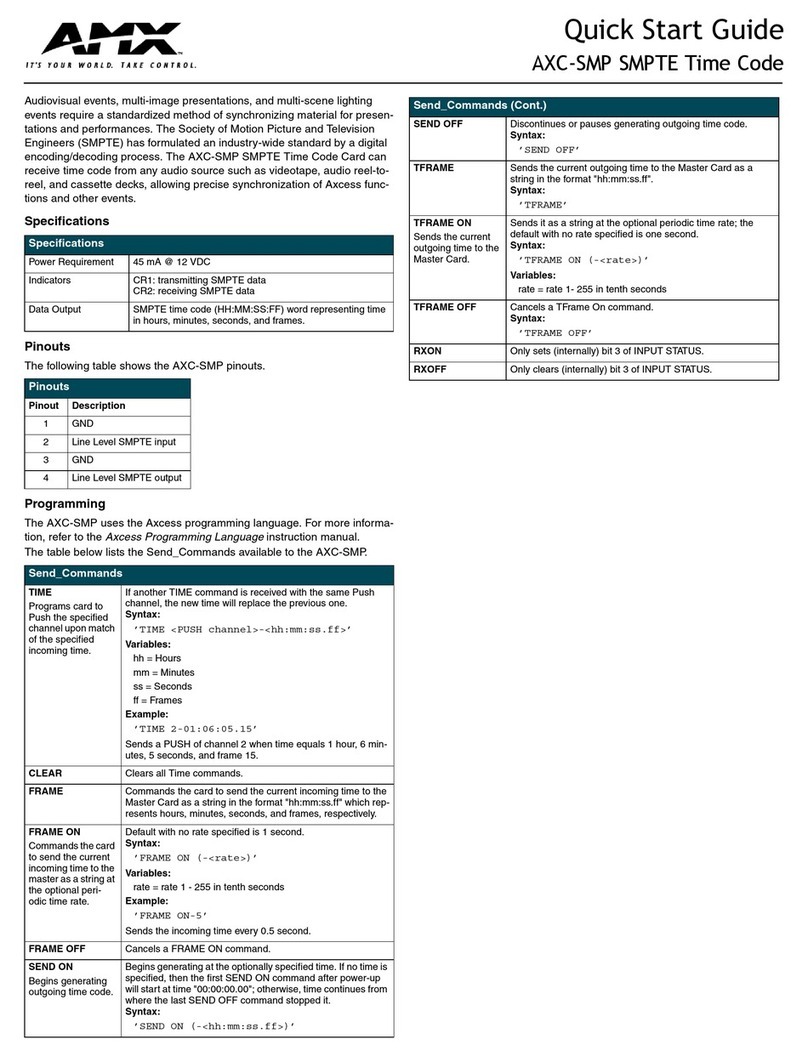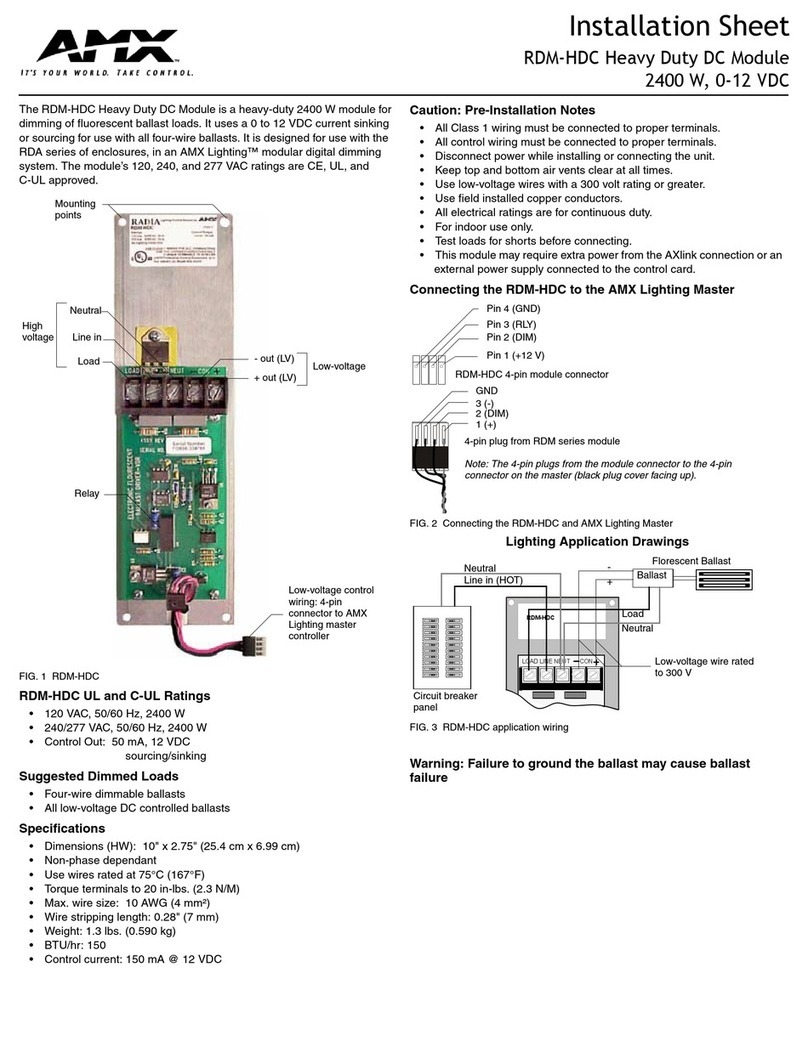
For full warranty information, refer to the AMX Instruction Manual(s) associated with your Product(s).
9/08
©2008 AMX. All rights reserved. AMX and the AMX logo are registered trademarks of AMX.
AMX reserves the right to alter specifications without notice at any time.
3000 RESEARCH DRIVE, RICHARDSON, TX 75082 • 800.222.0193 • fax 469.624.7153 • technical support 800.932.6993 • www.amx.com
93-2254-01 REV: F
Rear wiring connections:
•AUDIO IN: 6-pin mini-Phoenix connector, divided into left and right audio
channels. Each channel is divided into GND, IN+, and IN- terminal cable
connectors (2 sets of 3 for each channel).
An example of the cable is to strip the ends of 2 RCA audio cables and
insert them into their respective locations on the Audio In port.
Either a balanced (+, -, and GND) or unbalanced (+ and GND) audio
signal can be connected to this input.
•MIC OUT: 4-pin mini-Phoenix connector, divided into GND, OUT-, and
OUT+ terminal connectors.
An example of the cable use for this connector is to strip the terminal ends
of a 3.5mm mini-jack and insert them into their respective locations on the
Mic Out port. This signal can be fed as a Line Level In to either an
amplifier or an AMX VOL card.
Either a balanced (+, -, and GND) or unbalanced (+ and GND) audio
signal can be connected to this output.
•Video In BNCs: Feeds either Composite/S-Video Luma or S-Video
Chroma signals into the NXA-AVB/ETHERNET. This feed is then
redirected out to a Modero panel through the front Audio/Video CAT5 port.
•Ethernet: RJ-45 connector routes data to the G4 touch panel through the
front Ethernet port. These connections use a standard CAT5 Ethernet
cable to provide communication between the target touch panel, Breakout
Box, and NetLinx®Master. When feeding an A/V signal from the breakout
box to a 1200V-Series, VG-Series, or Table Top CV10 touch panel via an
RJ-45 cable, you must use the appropriate number of CAT5 Suppression
Ferrites (included with the touch panel) on the cable.
•PWR: 2-pin 3.5 mm mini-Phoenix connector connects to a PSN power
supply. This port can be used to provide power to a Modero panel by
sending it through the NXA-AVB/ETHERNET (rear power connector
through to the front power connector).
Wiring the NXA-AVB/ETHERNET for Unbalanced Audio
Most domestic audio equipment has unbalanced audio inputs and outputs. This
means that the audio output (left, right, or mono) appears on a single wire, and
is referenced to "0 V" or "Ground". Typical connectors used are RCA "phono"
connectors, DIN plugs/sockets, and 0.25" (6.3mm) or 3.5mm jack plugs/
sockets.
Unbalanced audio is adequate for most domestic environments and for
line-level signals in a typical broadcast studio. Problems may occur if the
signals are carried over long distances, especially if the source and destination
have separate main supplies. Use the following wiring drawing (FIG. 5) to
configure an unbalanced audio connection.
When using unbalanced audio for the AUDIO IN connector (FIG. 5),
the "-" and the "GND" terminals should be connected together and then
connected to the GND of the unbalance audio signal.
When connecting to an unbalanced audio input from the MIC OUT connector
(FIG. 5), wire the "+" terminal to the signal input, and the "GND" terminal to the
signal ground.
Description of Balanced Audio
Professional audio equipment will often use balanced audio inputs and outputs,
usually on 3-pin "XLR" connectors. A balanced audio signal consists of a pair
of wires carrying the audio signal in anti-phase with each other (if one wire
carries a positive voltage, the other carries an equal and opposite negative
voltage).
The advantage of balanced audio over unbalanced audio is its ability to reject
external interference added as the signal is carried over the wire. The receiving
equipment takes the voltage difference between the two wires as the input
signal. Interference will usually get added to both wires equally, and so gets
cancelled by the receiving equipment.
The 3 wires used in a typical XLR lead are often referred to as Ground, Live
(Hot), and Return (Cold). "Live" and "Return" carry the "in-phase" and
"out-of-phase" versions of the audio respectively. The pins of the XLR plug/
socket are as follows:
• X = GROUND
• L = LIVE (Hot)
• R = RETURN (Cold)
When connecting the MIC OUT connector to a balanced audio input (FIG. 6),
use all three audio terminals (+, -, and GND), then connect the "+" terminal to
the "live" signal, the "-" terminal to the "return" signal, and the "GND" terminal
to the ground signal.
FIG. 4 NXA-AVB/ETHERNET Breakout box connector wiring diagram
Microphone Out
(4-pin captive wire)
Audio In - Right Channel
(6-pin captive wire)
Audio In - Left Channel
(6-pin captive wire)
NXA-AVB/ETHERNET
Breakout
Box
F
R
O
N
T
GND
Out (-)
Out (+)
R
E
A
R
Audio/Video
(CAT5)
Ethernet
Out (CAT5)
Power to
touch
panel
Ethernet In
(RJ-45)
GND
In (-)
In (+)
In (-)
In (+)
PSN power
GND
supply
Comp/Y (BNC)
C (BNC)
FIG. 5 Wiring the rear AUDIO IN and MIC OUT for use with Unbalanced Audio
FIG. 6 Wiring the rear MIC OUT connector for use with Balanced Audio
Unbalanced IN
GND
IN-
IN+
GND
IN-
IN+
Left Channel
Right Channel
(Jumper IN- to GND)
Unbalanced OUT
GND
OUT-
OUT+
Microphone
Unbalanced IN
(Jumper IN- to GND)
AUDIO IN
MIC OUT
Balanced OUT
GND
OUT-
OUT+
Ground signal
Return signal
Live signal
